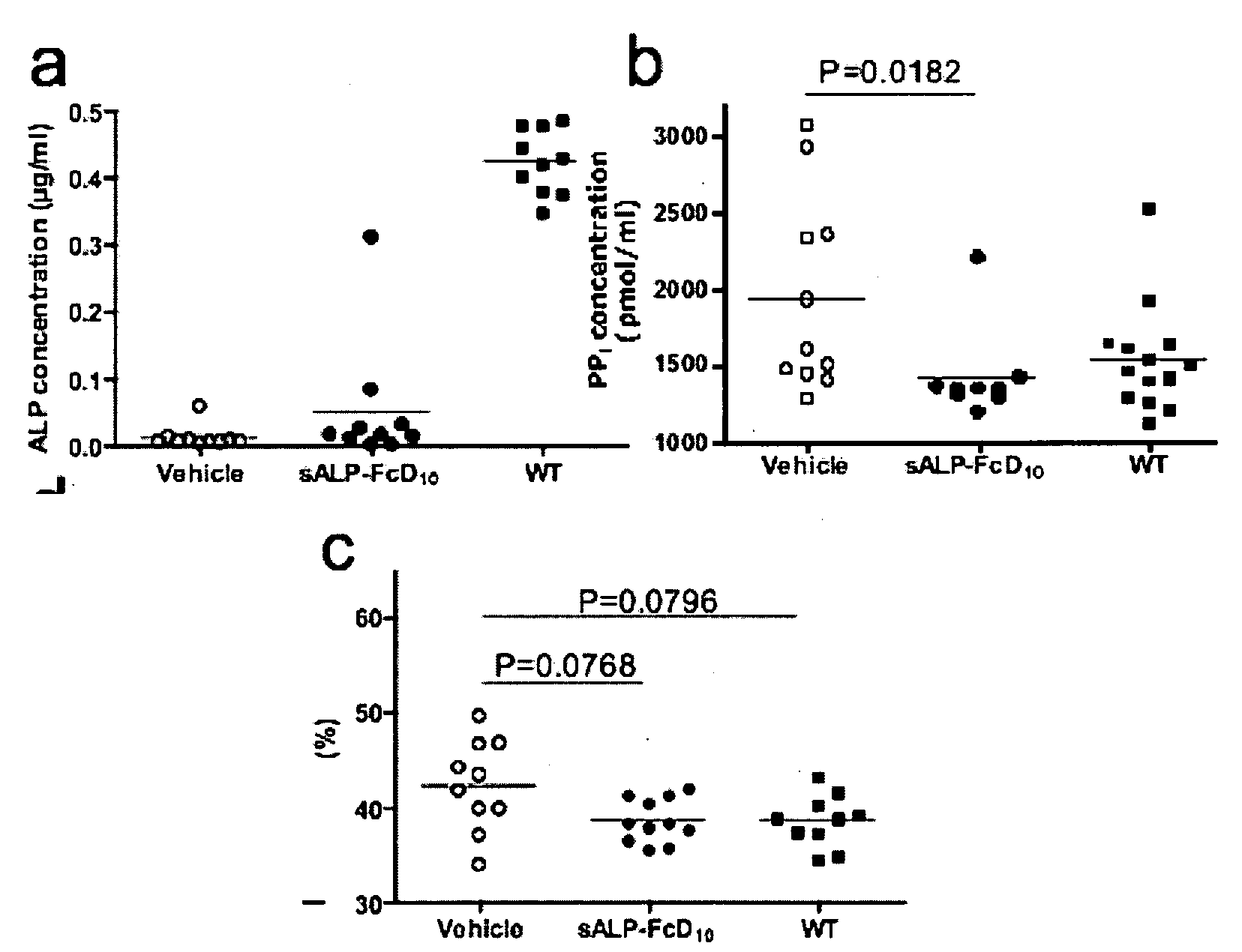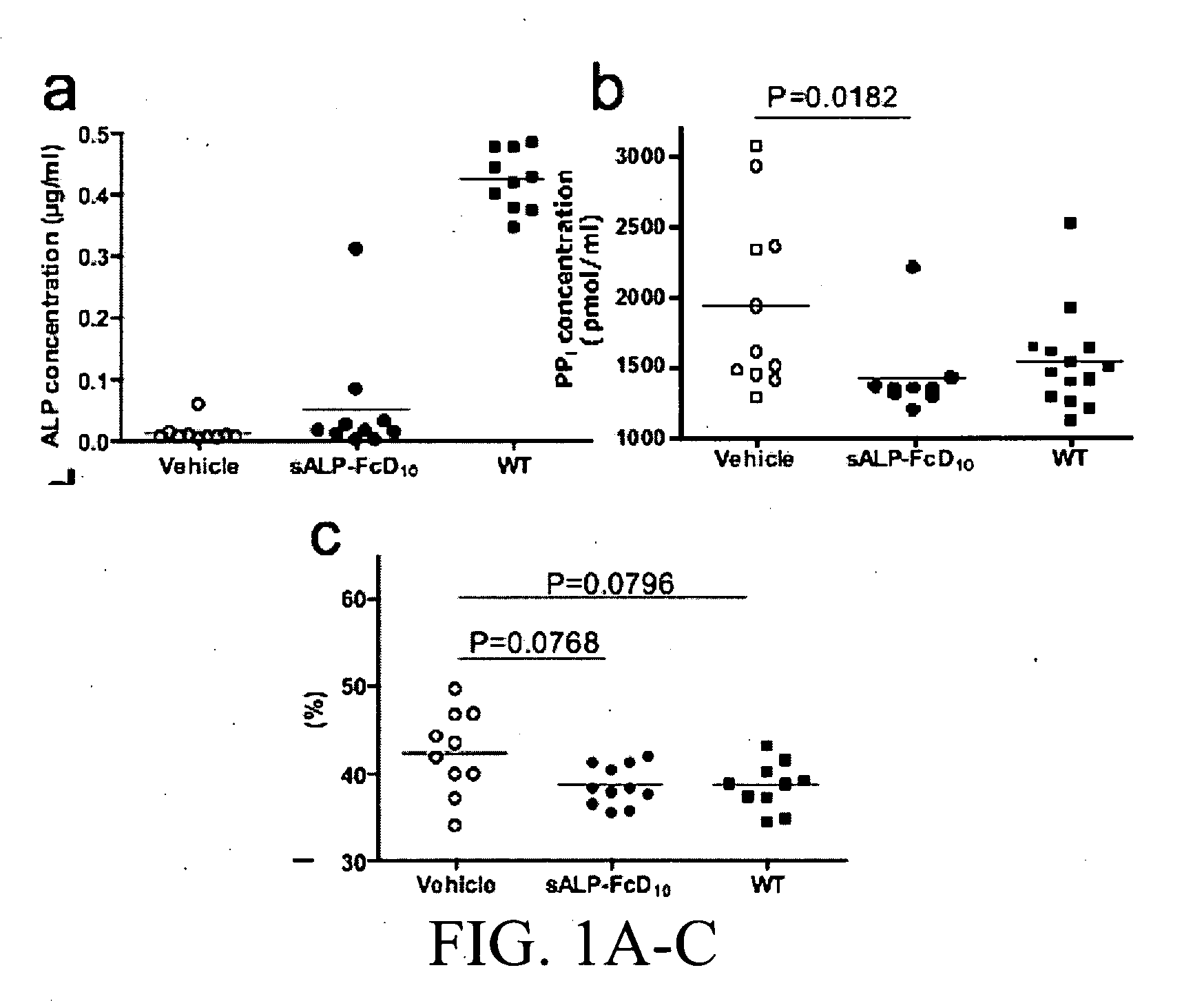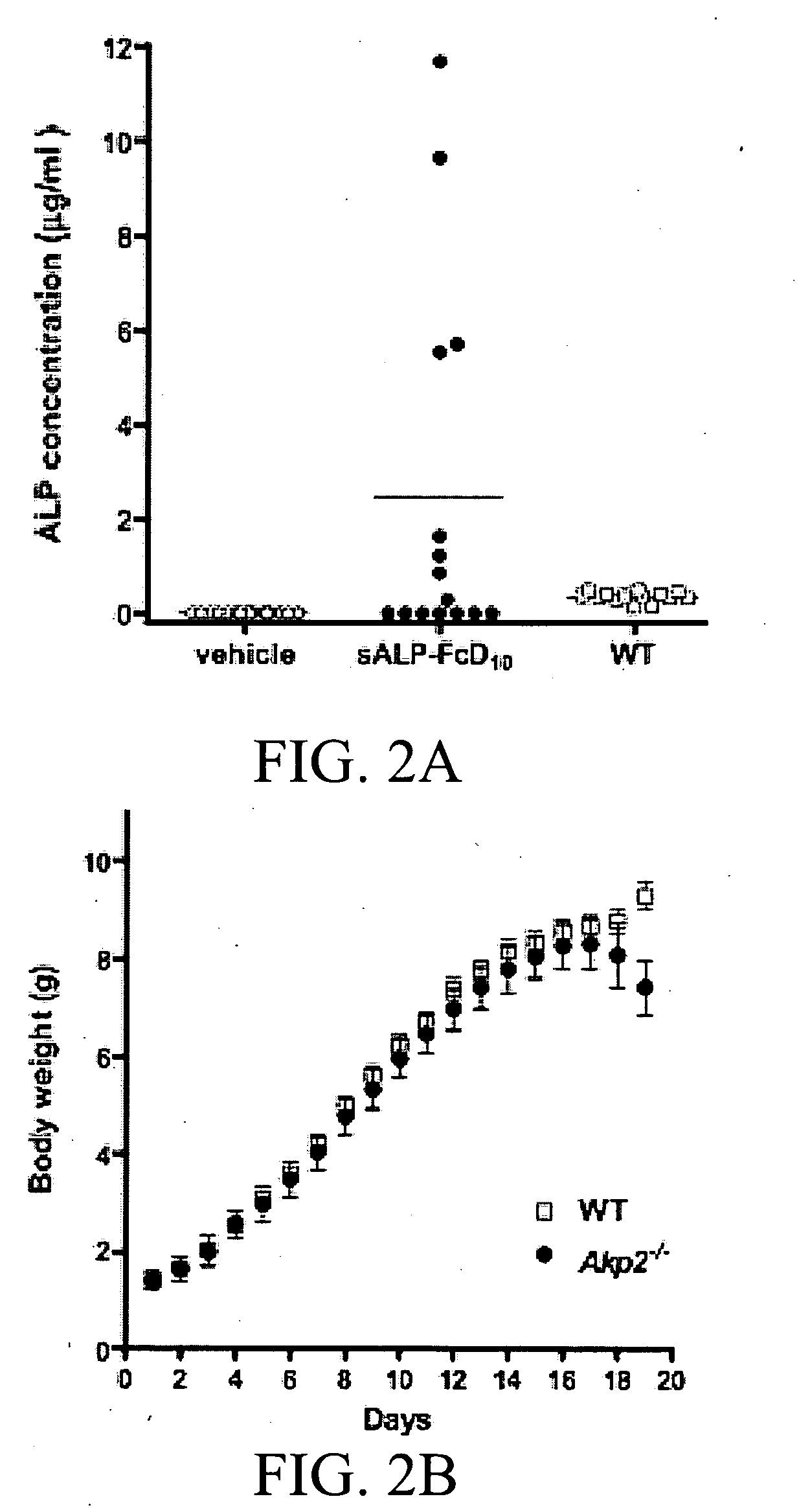Tissue-nonspecific alkaline phosphatase (TNAP) activators and uses thereof
a technology of tissue-nonspecific alkaline phosphatase and activators, which is applied in the direction of drug compositions, peptide/protein ingredients, metabolic disorders, etc., can solve the problems of increased fracture risk, inability to rescue affected infants, and no established medical therapy for hypophosphatasia
- Summary
- Abstract
- Description
- Claims
- Application Information
AI Technical Summary
Benefits of technology
Problems solved by technology
Method used
Image
Examples
example 1
1. Example 1
Enzyme Replacement Therapy for Hypophosphatasia
[0435]Results
[0436]Production and characterization of sALP-FcD10. To facilitate the expression and purification of recombinant TNALP, the hydrophobic C-terminal sequence that specifies GPI-anchor attachment was removed, thereby creating a soluble secreted enzyme, and the coding sequence of its ectodomain was extended with the Fc region of the human IgG (γ1 form). This allowed rapid purification of the recombinant enzyme using Protein A chromatography. Furthermore, to target the recombinant TNALP to bone tissue, a deca-aspartate (D10) sequence was fused to the C-terminal of each Fc region. The fraction of sALP-FcD10 protein purified on Protein-A Sepharose was analyzed on SDS-PAGE under reducing conditions where it migrated as a broad band with an apparent molecular mass of 90,000. Peptide N-Glycosidase F (PNGAse F) digestion reduced the apparent molecular mass to ˜80,000, which closely approximates the calculated mass of 80,5...
example 2
2. Example 2
Upregulation of TNAP Activity Increases Bone Mineral Density in Mice
[0464]As seen above, the rickets and osteomalacia characteristic in tissue-nonspecific alkaline phosphatase (TNAP)-deficient mice (Akp2− / − mice) results from highly increased levels of the calcification inhibitor PPi, a natural substrate of TNAP. These studies indicated the possibility of manipulating PPi concentrations as a means of affecting calcification. Thus, transgenic mice over-expressing TNAP might be able to achieve tissular expression of TNAP sufficiently high to be able to lower circulating PPi concentrations to enhance bone mineral density (BMD) in these animals. Transgenic mice were generated by expressing human TNAP cDNA under control of the Apolipoprotein E promoter, which drives expression of TNAP primarily in the post-natal liver. The expression levels of TNAP were examined in tissues from mice carrying one copy or two copies of the ApoE-Tnap transgene and also from [Akp2− / −; ApoE-Tnap] ...
example 3
3. Example 3
Identification of TNAP Activators
[0467]The majority of mechanistic studies on alkaline phosphatases have been performed on E. coli alkaline phosphatase. This information is directly applicable to the mammalian alkaline phosphatases due to high degree of sequence and structure homology. All alkaline phosphatases exist as homodimers, and oligomerization is required for their catalytic activity. The alkaline phosphatases catalyze hydrolysis of phosphate monoesters and this proceeds through a phosphoserine covalent intermediate. The detailed mechanism of a general alkaline phosphatase reaction is outlined below.
[0468]The above schematic shows the catalytic mechanism of alkaline phosphatase reaction (Millán, 2006). The initial alkaline phosphatase (E) catalyzed reaction consists of a substrate (DO-Pi) binding step, phosphate-moiety transfer to Ser-93 (in the TNAP sequence of its active site) and product alcohol (DOH) release. In the second part of the reaction, phosphate is r...
PUM
| Property | Measurement | Unit |
|---|---|---|
| pH | aaaaa | aaaaa |
| apparent molecular mass | aaaaa | aaaaa |
| apparent molecular mass | aaaaa | aaaaa |
Abstract
Description
Claims
Application Information
 Login to View More
Login to View More - R&D
- Intellectual Property
- Life Sciences
- Materials
- Tech Scout
- Unparalleled Data Quality
- Higher Quality Content
- 60% Fewer Hallucinations
Browse by: Latest US Patents, China's latest patents, Technical Efficacy Thesaurus, Application Domain, Technology Topic, Popular Technical Reports.
© 2025 PatSnap. All rights reserved.Legal|Privacy policy|Modern Slavery Act Transparency Statement|Sitemap|About US| Contact US: help@patsnap.com



